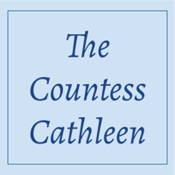
Overview
Synopsis
"The scene is laid in Ireland and in old times."
Life on the land is tough and the peasants are starving. Into their midst come two devils disguised as merchants. They offer gold to the poor people in return for their souls. At their most desperate, this strikes the peasants as a good deal, but their local patron, the Countess Cathleen is horrified by the prospect. She has recently returned to her estate after a long absence and she immediately tries to fix the problem. She arranges for all her gold and treasures to be gathered together and sold in order to feed and sustain the starving peasants. However, her actions do not please the devils, who realize that their prospective souls are slipping out of their hands. They steal Cathleen’s gold, leaving her without a fortune. Desperate and determined to help her people, Cathleen signs away her own pure (and therefore incredibly valuable) soul to the devils. Then, brokenhearted, she dies. However, her action results in her soul being saved and Cathleen ascends to heaven, out of the clutches of the disappointed demons. Like many of W.B. Yeats’ plays and those of other Irish playwrights around the turn of the twentieth century, The Countess Cathleen was inspired by Irish folklore.
Show Information
Context
The Countess Cathleen was first performed in its early form on May 8th, 1899 as the Irish Literary Theatre's inaugural production. However, in the following years it underwent several major revisions so that it became (in W. B. Yeats’ words) “all but a new play”. The final version of the play premiered at the Abbey Theatre, Dublin on December 14th, 1911.
to read the context for The Countess Cathleen and to unlock other amazing theatre resources!Plot
Characters
| Name | Part Size | Gender | Vocal Part |
|---|---|---|---|
|
Lead |
Female |
Non-singer |
|
|
Supporting |
Male |
Non-singer |
|
|
Supporting |
Female |
Non-singer |
|
|
Supporting |
Male |
Non-singer |
|
|
Supporting |
Male |
Non-singer, Tenor, Baritone, Bass |
|
|
Supporting |
Female |
Non-singer |
|
|
Supporting |
Male |
Non-singer |
|
|
Ensemble |
Either Gender |
Non-singer |
Songs
A song with an asterisk (*) before the title indicates a dance number; a character listed in a song with an asterisk (*) by the character's name indicates that the character exclusively serves as a dancer in this song, which is sung by other characters.
Monologues
Scenes
Key Terms
Sorry! We do not currently have terms for this guide.
Videos
Sorry! We do not currently have videos for this guide.
Quizzes
Themes, Symbols & Motifs
Sorry! We do not currently have learning modules for this guide.
Quote Analysis
Sorry! We do not currently have learning modules for this guide.
